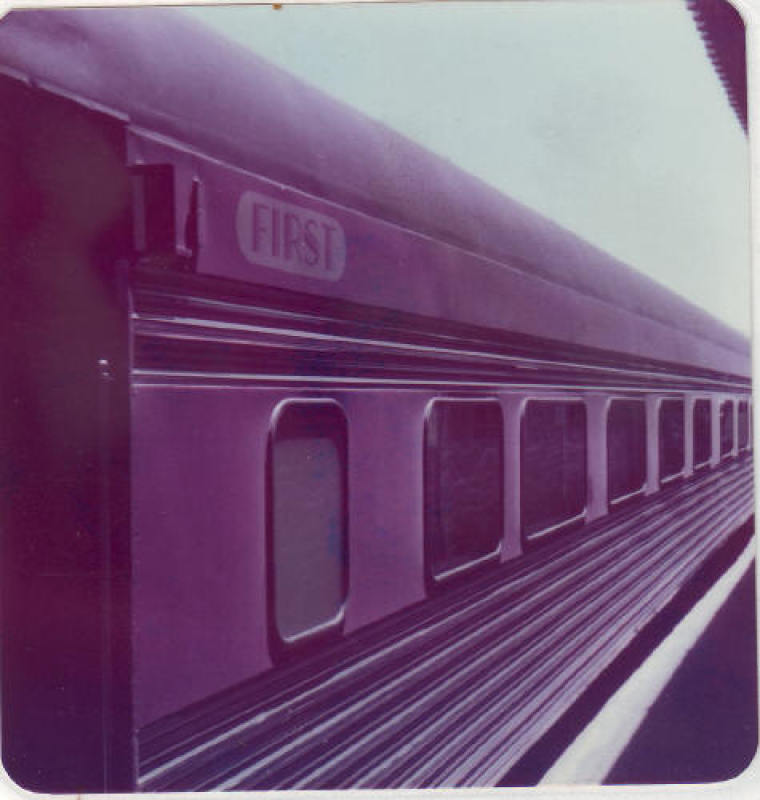
John Hoyle of 'The Australian' newspaper raised these sentiments, in his article 'People miss the point' in the 'Railways Special Report' (Friday 16 April), although he expressed his concerns in a different way.
Hoyle cites a daily ritual of school children being dropped off to school and collected again in the afternoon, something that is repeated across the nation. He commented: "Many of these children have never travelled on a train, and in the current Australian cultural settings, possibly never will, or at the very best, only have minimal experience of rail travel (suburban) and the rail industry (watching a freight train go by)."
He further laments that in the past whole generations of family members worked on the railways, particularly during the peak expansion years of the fifties and sixties.
M V Tronson experience of the railways is first hand. For ten years he worked on the NSW Government Railways as a locomotive engineman from 1968, fired steam on the main south including the huge 38 class steam locomotive. He saw the diesel era come upon the railways and drove the first diesels, the 40 Class through to the then smashing new 422 and 442 Class which came out in the mid 1970's.
These years were the great railway passenger express train era with name trains that caught the imagination of the nation – the Southern Aurora, The Spirit of Progress, The Sunlander, the Overland, The Trans-Continental, Inter-Captial Daylight Express, the Brisbane Limited, the Gold Coast Motor-Rail Express, to name but a few.
These were all diesel-electric hauled long distance trains, the overnight expresses had sleeping accommodation with restaurant cars, some even had lounge cars. These trains ran to tight timetables and in some cases the word 'Express' may have had some hyperbole to it, but nonetheless they transported Australians across the nation with a high degree of opulence and comfort.
Then in a blaze of publicity the various types of XPT (Express Passenger Train) and Tilt Trains came into service. These were faster running trains with an engine car on either end of the passenger set. These power sources (engine car at either end) were useless as a power source once the train was at their destination. In many cases they sat for eight to ten hours in idle.
M V Tronson has maintained for years that a better use of such power, is that a diesel locomotive (which relate to the words "revenue earning") should have been incorporated (rather than engine cars) for as soon as a locomotive has finished hauling a passenger train, it can then be whisked off to haul freighter (more than likely those high-revenue fast container trains).
The Australian airline industry began to follow international trends and realised the benefits of 'economies of scale' that more people on airlines paying cheaper prices meant higher profits. The airlines could also increase their profits by transporting goods more quickly than road transport – and this has had benefits to consumers by being able to purchase fresh, more healthy produce from all over Australia.
It has benefited the producers of goods, too, in being able to get whatever it is they produce to markets quickly, cheaply and in good condition – they can then charge a premium for their items.
The long distance rail passenger train slowly but surely began to lose its grip on the travel market and trains like The Ghan, the Indian Pacific, the Queenslander took on a different role, that of a leisurely holiday experience, with the emphasis not on a 'timetable' but on 'respite' value.
M V Tronson believes that there remains a railway marketing opportunity to capture a share of those currently travelling by air. For example, these overnight inter city expresses could be transformed into boutique upmarket sleeping quarters with a butler on hand, a maximum of five carriages, a parcel van and an express diesel electric locomotive.
The rail experience's reliability is a huge factor in its favour. The airline industry is in crisis with issues outside its control. It takes passengers up to two hours to battle their way through heavy traffic to the airport. Passengers are increasingly being required to be at the airport two hours prior to the departure time. Late departures due to air traffic control are now part of life. Arrivals are no better. The security is something else!
Some of these security issues and delays may well come to railway stations if the rail traffic increases markedly – but for the time being, it is a more relaxing environment than an airport.
Footplate Padre Mark Tronson claims that now might just be the time to explore some rail options with a whole new twist. The 'luxury' and 'comfort' and 'respite' aspect of train travel could be brilliantly promoted. There might even be a Padre on board!